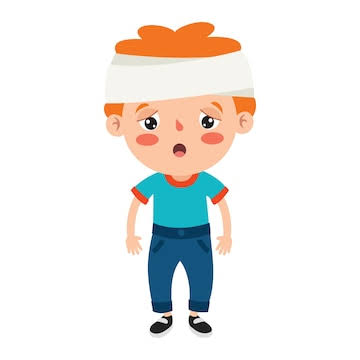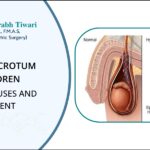Pediatric Trauma in Mumbai

Pediatric Trauma
Pediatric trauma refers to injuries sustained by children, ranging from mild to severe, that can occur due to accidents, falls, sports-related incidents, or physical abuse. Children are particularly vulnerable to trauma due to their active lifestyles, developmental immaturity, and unique physiological characteristics. Prompt and appropriate management of pediatric trauma is crucial to ensure the best possible outcomes for the child. Dr. Saurabh Tiwari is dedicated in providing expert surgical interventions for children with traumatic injuries.
Types of Pediatric Trauma
Pediatric trauma can involve a wide range of injuries affecting various body systems. Some common types of pediatric trauma include:
- Head Injuries: Traumatic brain injuries (TBIs), concussions, and skull fractures can occur due to falls, sports-related accidents, or motor vehicle collisions.
- Fractures: Children’s bones are more flexible than adults, making them prone to fractures. Common fractures in children include those in the arms, legs, collarbones, and wrists.
- Abdominal Injuries: Blunt trauma to the abdomen can lead to injuries to organs such as the liver, spleen, or kidneys.
- Chest Injuries: Trauma to the chest can cause rib fractures, lung injuries, or pneumothorax (collapsed lung).
- Burns: Scalds, contact burns, or electrical burns can occur due to accidents involving hot liquids, open flames, or electrical sources.
- Soft Tissue Injuries: Cuts, lacerations, bruises, or abrasions can result from falls, sharp objects, or accidents.
Initial Assessment and Stabilization
When a child presents with trauma, immediate assessment and stabilization are vital. The primary survey focuses on identifying and managing life-threatening conditions such as airway compromise, breathing difficulties, severe bleeding, or spinal cord injuries. The ABCDE approach (Airway, Breathing, Circulation, Disability, Exposure) is commonly used to guide the initial assessment.
Following the primary survey, a secondary survey is conducted to assess and manage injuries that are not immediately life-threatening. This involves a thorough examination of the child, including a head-to-toe assessment, obtaining a detailed medical history, and performing diagnostic tests such as X-rays, CT scans, or ultrasound as necessary.
Treatment and Rehabilitation
The treatment and management of pediatric trauma depends on the type and severity of the injuries. Treatment approaches may include:
-
- Wound care and suturing for cuts and lacerations.
- Immobilization or casting for fractures.
- Surgical interventions for severe injuries, such as internal organ injuries or complex fractures.
- Medication administration for pain management, infection prevention, or other specific needs.
- Rehabilitation services, including physical therapy, occupational therapy, or psychological support, to aid in the child’s recovery and functional restoration.
Preventing Pediatric Trauma
Preventing pediatric trauma is crucial in ensuring the well-being of children. Some preventive measures include:
- Child proofing the home: Install safety gates, window guards, and cabinet locks to prevent falls and access to hazardous substances.
- Promoting seatbelt and helmet use: Encourage the consistent use of seatbelts and age-appropriate helmets during motor vehicle travel and sports activities.
- Supervision: Provide appropriate supervision for children during play and recreational activities to minimize the risk of accidents.
- Educating caregivers: Educate parents, caregivers, and teachers about child safety, including proper use of car seats, playground safety, and fire prevention.
Pediatric trauma is a significant concern due to the vulnerability of children to injuries. Dr. Saurabh Tiwari’s expertise in Pediatric Surgery in Goregaon, Malad, Jogeshwari, and Andheri makes him an invaluable resource for parents and caregivers. By recognizing the signs of pediatric trauma, seeking prompt medical attention, and implementing preventive measures, we can work together to safeguard the well-being and future of our children.



